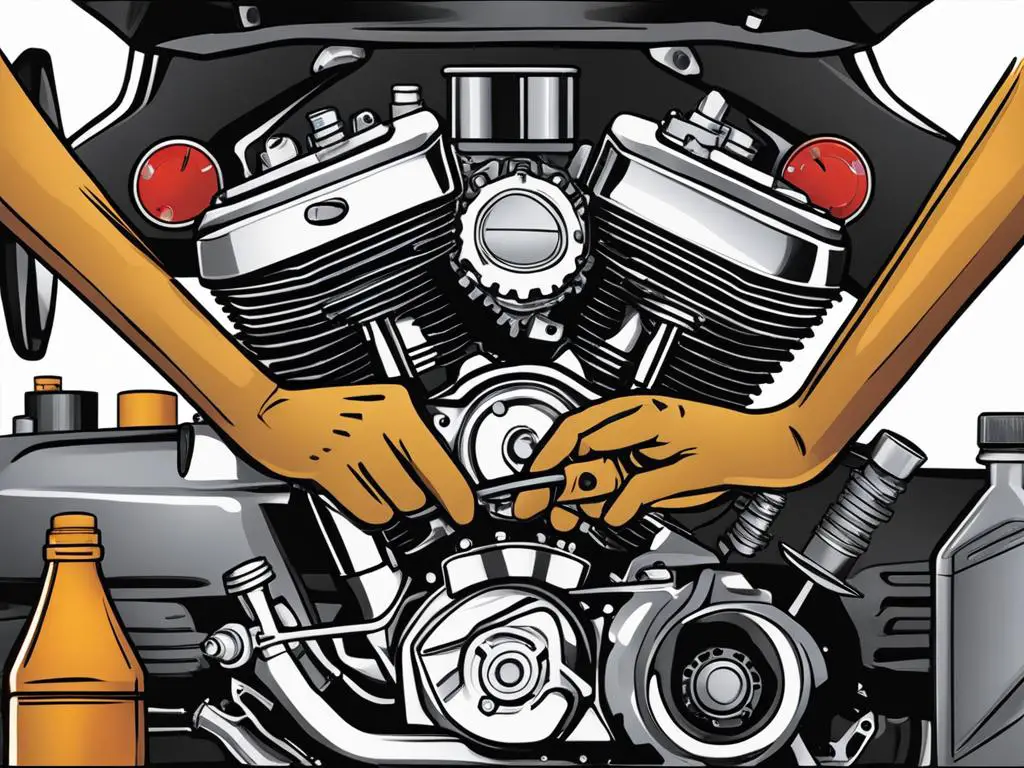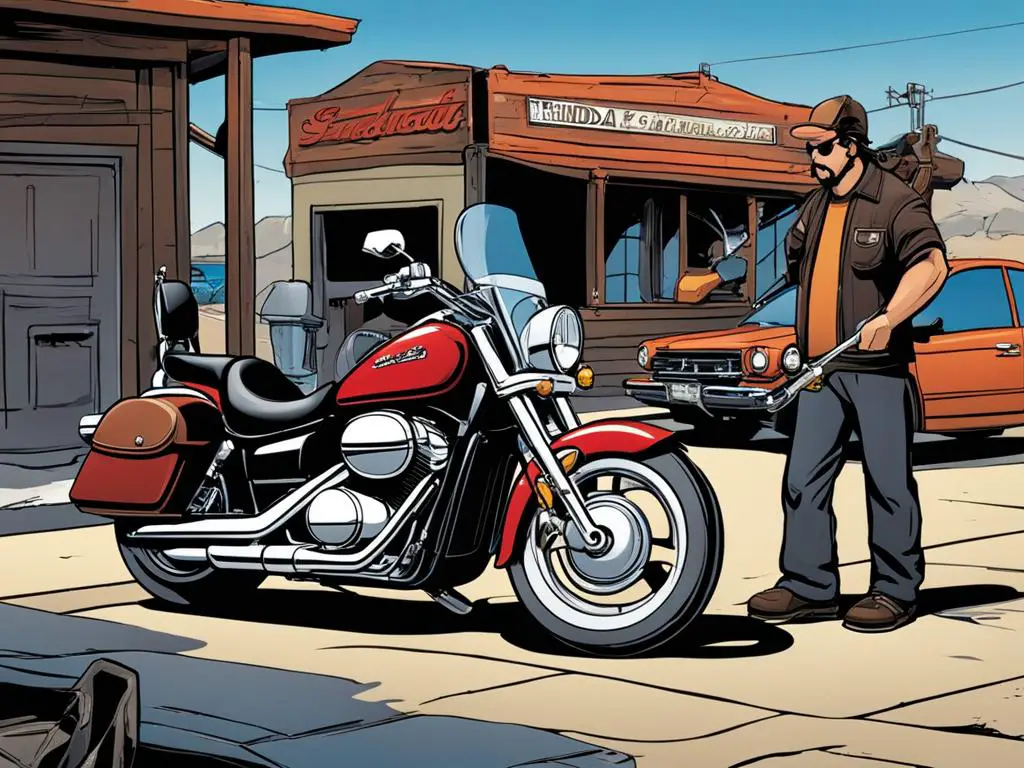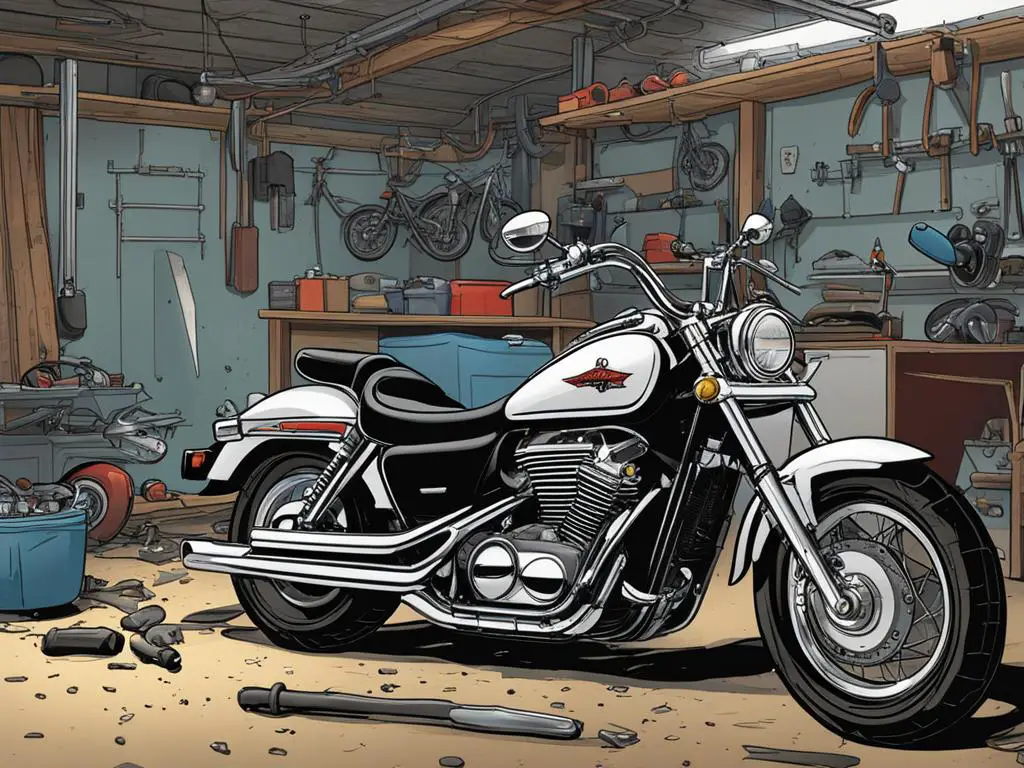For enthusiasts of the classic cruiser, the Honda Shadow 1100 has long been a beacon of reliability on the open road. Despite its durable construction and timeless design, seasoned riders and new owners alike have encountered honda shadow 1100 problems that span various models and generations. Troubleshooting these issues often involves peeling back the layers of symptoms to reveal the underlying mechanical mischiefs, whether they be related to the bike’s fuel system, electrical wiring, or the drive train. Within the pages of dedicated forums and through collective wisdom, the bike’s idiosyncrasies have been documented, offering a treasure trove of insights for fixing honda shadow 1100 problems. From the pesky stator malfunctions to the notorious fuel pump failures, understanding and addressing these common issues with honda shadow 1100 necessitates a blend of technical savoir-faire and preventative upkeep.
Our vigilant approach to troubleshooting honda shadow 1100 leads us to a meticulous examination of multimodal symptoms. Frustrations stem from sprawling electrical qualms to more insidious carburetor conundrums — all requiring a keen eye and skilled hand to diagnose and rectify. The resilience of these machines is not solely a product of their build but the care invested in their maintenance. So grab your toolkit and a healthy dose of patience, as we delve into the frequently reported issues that may arise during your stewardship of a Honda Shadow 1100.
Key Takeaways
- Recognize the prominence of electrical problems in the Honda Shadow 1100 and have a strategy for addressing them.
- Carburetor and fuel pump issues are common and can mirror symptoms of less problematic conditions.
- Regularly greasing the rear wheel splines is crucial to avoiding costly drivetrain repairs.
- Maintenance and proactive care are essential to preserve the longevity and performance of the bike.
- Familiarize yourself with DIY solutions for minor issues to avoid unnecessary trips to the mechanic.
- Understanding the bike’s mechanical language through symptoms can help preempt major breakdowns.
Understanding the Honda Shadow 1100’s Reputation
Regarded as a staple in the cruiser segment, the Honda Shadow 1100 has been celebrated for its reliability and the sheer joy it brings to leisurely rides and long cruising journeys. Yet, a closer look at the known problems Honda Shadow 1100 models have encountered reveals a more nuanced picture that calls for owner vigilance. Despite its accolades, this iconic bike is not without its mechanical quirks that have cultivated a mixed reputation amongst its loyal riders.

Much of the discussion within biker circles and online forums centers around a few specific issues that tend to emerge over time. These range from minor annoyances to more severe malfunctions that require prompt attention. For instance, riders have often found themselves grappling with persistent leaks from the head and base gaskets—an irksome trait not uncommon to the Shadow 1100. This, along with radiator overheating and the rapid wear of brake pads, paints a picture of a bike that demands a respect for maintenance to match its performance caliber.
Fortunately, the challenges faced by Honda Shadow 1100 aficionados have not dampened the spirits of this tight-knit community. The prevalence of DIY solutions stands as a testament to both the bike’s accessibility in terms of repairs and its owner’s willingness to roll up their sleeves. Practical honda shadow 1100 maintenance tips such as regular greasing of wheel splines are shared like rites of passage, vital for the maximized operation of these machines. It’s this shared reservoir of knowledge and tips that empower riders to keep their motorcycles on the road longer, reaching milestones exceeding 75,000 and, in some cases, even 100,000 miles.
Riders are often quick to remind each other: the heart of the Honda Shadow 1100’s longevity lies as much in the careful maintenance routines as in the ride itself.
Meticulous care, particularly during long storage periods in colder climates, serves to prevent the typical pitfalls of motorcycle neglect. After all, a machine left to its own devices is a machine at risk—be it from seized components or the degradation of essential fluids.
In drawing upon a rich heritage of resilience, the Honda Shadow 1100 continues to carve its path on the open road. It beckons to those who not only seek the thrill of the ride but who also respect the intricacies of its mechanics—propelling the legacy of this celebrated model ever forward.
Common Electrical Challenges in the Honda Shadow 1100
Navigating through the world of motorcycle maintenance, Honda Shadow 1100 owners often encounter electrical dilemmas. These challenges form a significant part of the honda shadow 1100 troubleshooting guide literature and serve as a cautionary tale for those who ride this esteemed cruiser. Knowing the signs of electrical distress and implementing timely common repairs for honda shadow 1100 can often mean the difference between a leisurely cruise and an untimely breakdown. Among these electrical tribulations are a pair of notorious culprits—the stator and the regulator—complemented by issues with the three-wire stator connector.

Stator and Regulator Issues
Anecdotes from the community reveal that many have found themselves dealing with problematic stators and regulators. The stator, a generator providing power to the battery, is known for its displeasing tendency to fail, sending riders on a quest for common honda shadow 1100 issues and solutions. A faulty regulator, the device ensuring the battery receives proper voltage, often partners with the stator in its rebellion. These electrical components are pivotal to the bike’s operation, and their failure is not to be taken lightly.
Often, it is advised to upgrade the wires or completely replace both the stock stator and rectifier to restore electrical harmony. While this may demand investment in parts and labor, the return on such repairs is immeasurable in terms of peace of mind and uninterrupted riding pleasure.
Three-Wire Stator Connector Failures
Another electrical component that poses a frequent inconvenience is the three-wire stator connector. Ironically, its failure is consistent enough to feature prominently in common repairs for honda shadow 1100 discussions. As a prevalent recommendation, expert riders often suggest a preemptive strike—cutting the connector out and directly soldering the wires for a more robust and enduring connection. This operation, while straightforward, requires a steady hand and a measure of bravery from the DIY enthusiast.
Although the prospect of wrestling with electrical components may seem daunting, the available knowledge and shared experiences surrounding these common issues can arm any Honda Shadow 1100 owner with the confidence to face electrical challenges head-on. With the right tools and a bit of patience, keeping the electrical system in top condition contributes significantly to the renowned resilience and longevity of this classic cruiser.
Frequent Fuel System Faults
Confronted with the intricacies of motorcycle mechanics, owners of the Honda Shadow 1100 often bump into fuel system stumbling blocks. Central to the efficient operation of these cruisers, the fuel pump’s functionality cannot be taken for granted. A failing pump might not always cry out through a complete breakdown but rather whisper through suboptimal performance—manifesting as rough engine idle or inadequate acceleration. This is a definitive chapter within the broader honda shadow 1100 troubleshooting guide, where identifying and fixing honda shadow 1100 problems rooted in the fuel system is crucial.
Fuel Pump Diagnosis and Missteps
Persistent fuel system dilemmas can often mask themselves behind the guise of lesser evils. When Shadows run awry, the blame might hastily fall upon the suspected culprit of fuel quality. Yet it’s the pump—quietly underperforming—standing at the heart of the matter. Escaping the snare of this misdiagnosis is an exercise in vigilance and precision—a staple of any seasoned Shadow rider’s repertoire.
Empowering the motorcycle’s heart with a steady diet of fuel, the pump is indispensable. Alas, should it err, one might dive into the depths of carburetor repair without need, spending hard-earned dollars without cause. Proper identification and timely intervention keep this scenario at bay.
It is nothing short of essential to ensure the fuel system’s health through consistent observation and upkeep. Such diligence not only circumvents current troubles but fortifies against future failings. Below is an embedded service table that offers insights into the key maintenance tasks necessary for preventing common fuel system faults in your Honda Shadow 1100.
| Maintenance Task | Frequency | Indicators of Need | Benefits |
|---|---|---|---|
| Fuel Quality Check | Before Each Ride | Stale or contaminated fuel | Ensures engine receives clean fuel, prevents deposits |
| Fuel Filter Replacement | Every 12,000 miles | Noticeable dip in performance, rough idling | Maintains cleanliness in fuel delivery, enhances performance |
| Fuel Pump Inspection | Every service interval | Difficulty starting, power loss, engine sputtering | Prevents unexpected pump failure and poor engine performance |
| Fuel Line Examination | Annually | Visible wear, cracks, or leaks | Avoids fuel leaks, ensures optimal fuel pressure |
In the grand ballet of troubleshooting, the steps are simple: observe, diagnose, and maintain. Keep your Shadow roaring with vitality, for a well-fed engine is a content one—eager to thrust forth beneath open skies and along winding roads.
Drivetrain and Transmission Troubles
When charting the course of maintenance for the Honda Shadow 1100, savvy bikers often find themselves navigating the choppy waters of drivetrain and transmission troubles. These mechanical areas are pivotal for the smooth operation of the bike and, when neglected, can lead to a cavalcade of performance issues and costly repairs. Within this realm, two problem areas stand out: clutch complications and rear wheel spline deterioration. Riders have documented their struggles with these components, offering valuable honda shadow 1100 maintenance tips and indicated common repairs for honda shadow 1100 that can be managed to maintain ride quality and bike longevity.
Clutch Complications
Clutch issues commonly vex Honda Shadow 1100 owners. The feeling of a clutch beginning to slip or lose its grab during acceleration or gear changes can signal that your friction plates and springs may be on their last leg. These wear-and-tear components are integral to a smooth and responsive ride; thus, keeping them in prime condition is non-negotiable. Regular clutch assessments and the proactive replacement of aged parts are among the essential honda shadow 1100 maintenance tips that can forestall unexpected stops and enhance your control over the bike’s power.
Rear Wheel Spline Deterioration
In the same vein of transmission health, the rear wheel splines warrant careful scrutiny. It’s a tale told too often: a rider neglects to grease the splines periodically, leading to premature deterioration and, ultimately, more profound mechanical woes down the road. This maintenance misstep is easily avoidable, yet it persists as a common pitfall. A thorough greasing—ideally when changing tires or as prescribed by service intervals—is one of those common repairs for honda shadow 1100 that isn’t exactly a repair but a critical preventive strategy to keep the beast rolling. By giving due attention to this part of the drivetrain, you safeguard against damage and secure a spot down the road where the journey is measured in memories, not in mechanical failures.
Drivetrain and Transmission Troubles
What are the most common electrical problems with the Honda Shadow 1100?
The most frequently reported electrical problems include stator and regulator issues, as well as failures associated with the three-wire stator connector, often requiring replacement or rewiring to ensure reliability.
How can I perform troubleshooting on my Honda Shadow 1100?
Troubleshooting should start with inspecting the electrical system, particularly the stator, regulator, and connectors. From there, checking the fuel system, including the fuel pump and carburetor, followed by the drivetrain components, like the clutch and rear wheel splines, is advisable.
How can I fix a failing stator or regulator on my Honda Shadow 1100?
Fixing a failing stator or regulator often involves replacing these components. It is also wise to upgrade the wiring and in some cases remove problematic connectors by soldering the wires directly for a more durable solution.
What are some known problems with the Honda Shadow 1100?
Known problems include head and base gasket leaks, overheating issues, worn brake pads, and carburetor problems stemming from clogging and poor fuel delivery.
What can I do to maintain my Honda Shadow 1100?
Regularly check and replace fluids, inspect and maintain electrical connections, adhere to a schedule for greasing wheel splines, and pay special attention to signs of brake and clutch wear are key to maintaining your Honda Shadow 1100.
What are the signs of stator and regulator problems?
Symptoms may include difficulty starting the bike, inconsistent idling, a dead battery despite a running engine, or fluctuating headlight intensity—pointing to potential stator or regulator issues.
How do I address three-wire stator connector failures on my bike?
The recommended approach is to remove the faulty three-wire connector and solder the wires directly, thus eliminating the weak link and ensuring a more reliable electrical connection.
What fuel system faults should I watch out for in the Honda Shadow 1100?
Issues with the fuel pump and blockages in the carburetor are common. Signs of fuel system faults include engine sputtering, poor acceleration, or difficulty starting the bike.
How can I fix fuel pump problems in my Honda Shadow 1100?
If the fuel pump is the issue, replacement is often necessary. However, it’s important to diagnose the problem accurately to avoid misdirected repairs like unnecessary carburetor service.
What are common clutch problems in the Honda Shadow 1100?
Common clutch problems include slipping, sticking, or complete failure, often due to worn friction plates or weak springs. Regular inspections and timely replacement of these components are essential.
How do I prevent rear wheel spline deterioration on my Honda Shadow 1100?
Preventing rear wheel spline deterioration involves regularly greasing the splines, particularly during tire changes or maintenance intervals, to avoid untimely wear and potential part failure.

Leave a Reply